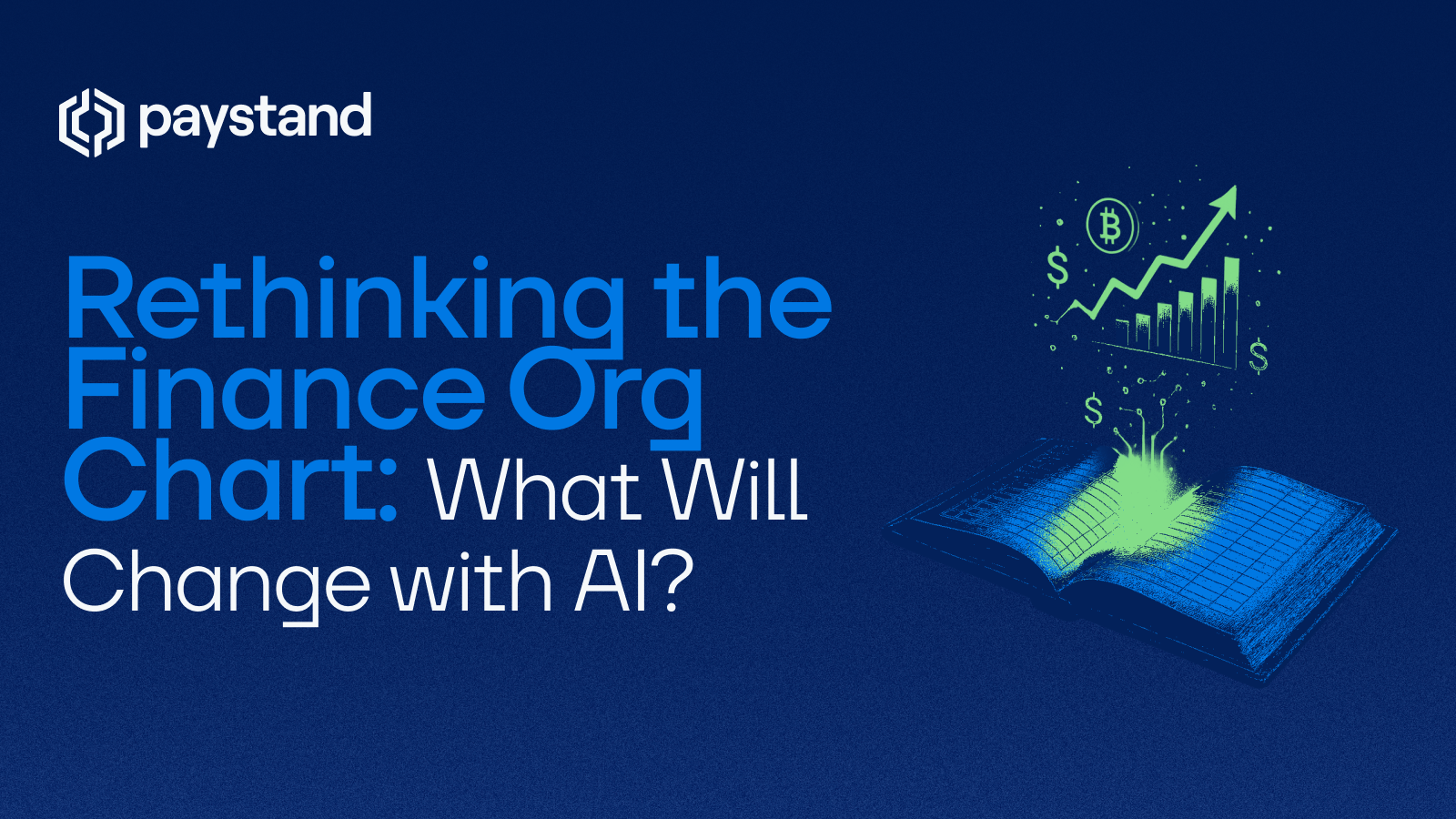Rethinking the Finance Org Chart: What Will Change with AI?

Table of Contents
- AI Adoption in Finance
- What Are the Best Strategies for Integrating AI into a Finance Org Chart?
- Which AI-Powered Tools Should Finance Leaders Adopt?
- From Pyramid to Diamond: Rethinking Finance Structure
- How Can Companies Redesign Their Finance Org Chart?
- Hybrid Skills: Hiring and Reskilling for an AI-Enhanced Finance Org Chart
- The Ethics of AI in Finance
- Leadership Shift: Preparing for AI’s Impact
Key Takeaways
- The finance org chart is shifting from a pyramid to a diamond as AI automation reshapes operational layers.
- AI-powered tools free finance teams from repetitive work and enhance real-time decision-making.
- Companies must redesign organizational structures to maximize the benefits of AI-driven processes.
- Hiring and reskilling will focus on hybrid skills—professionals who can collaborate with both humans and AI systems.
- Ethical and leadership considerations are essential as finance teams embrace AI-integrated models.
The finance org chart has always been a blueprint for how teams function, who makes decisions, how information flows, and where responsibilities sit. But with artificial intelligence (AI) reshaping nearly every aspect of business operations, the traditional team structure is starting to look outdated.
Finance leaders are now asking: How will AI-driven automation, analytics, and decision-making reshape the way finance organizations are built? In this blog, we’ll explore what the AI-integrated finance org chart of the future might look like and how businesses can prepare.
AI Adoption in Finance
Finance has always been a numbers-first discipline, but the rise of AI-powered tools is shifting its foundation from manual calculation to real-time analysis and strategic insight. Companies that invest in AI are already seeing measurable gains in speed, accuracy, and cost savings.
From AI payment processing that accelerates receivables, to finance automation and workflow automation that remove repetitive tasks, AI systems allow finance professionals to move from operational firefighting to proactive business partnering. This shift isn’t just about efficiency—it’s about transforming finance into a growth engine.
What Are the Best Strategies for Integrating AI into a Finance Org Chart?
The best strategies start with clear mapping of workflows. Finance leaders should analyze which areas are best handled by human teams, which by AI agents, and which require shared roles with AI.
- Automation first: Identify repetitive tasks like invoice matching, reporting, or compliance checks. These are prime candidates for AI-driven automation. Learn more things to automate in our Finance Automation Guide.
- Decision support: Use AI-enhanced forecasting tools and large language models to help CFOs and controllers make better calls in real time.
- Customer service crossover: AI chatbots and agents can reduce manual strain by answering internal questions about budgets, policies, or payments.
Which AI-Powered Tools Should Finance Leaders Adopt?
When restructuring a finance org chart, leaders should consider tools that integrate seamlessly with existing organizational structures and ERPs. Some key categories include:
- AI-integrated ERP extensions: automate reconciliation, reporting, and payment flows.
- AI-driven analytics platforms: provide predictive modeling and real-time financial insights.
- Workflow automation tools: reduce human error by streamlining approvals and document processing.
- AI-enhanced collaboration tools: support finance, IT, and software engineers in building scalable systems.
These tools don’t replace human teams, they empower them with AI’s potential.
From Pyramid to Diamond: Rethinking Finance Structure
The traditional finance org chart has often looked like a pyramid: a large base of operational staff, a middle layer of managers, and a small leadership team at the top.
With AI, that pyramid is shifting to a diamond-shaped structure:
- A smaller operational base as AI systems handle routine tasks.
- A broader middle layer of hybrid-skilled professionals who work with both humans and AI-powered tools.
- A focused leadership core making more strategic decisions, often with the help of AI-enhanced insights.
This new shape reflects the shift from transactional work to an AI-integrated strategy.
How Can Companies Redesign Their Finance Org Chart?
Companies should begin by separating human-AI shared roles from AI-driven processes. For example:
- Accounts receivable may move from manual data entry to AI payment systems that reconcile invoices automatically.
- Financial planning and analysis (FP&A) may be powered by real-time AI forecasting paired with oversight from skilled humans.
- Compliance roles may shrink in volume but grow in responsibility, as humans oversee ethics and how to reduce financial risk with AI-enhanced processes.
Hybrid Skills: Hiring and Reskilling for an AI-Enhanced Finance Org Chart
One of the most effective ways to maximize AI adoption is to focus on hybrid skills—finance professionals who can interpret numbers and work alongside AI tools.
- Upskilling: Train existing staff to use AI-enhanced dashboards and analytics.
- Reskilling: Transition roles that previously focused on repetitive tasks into higher-value analysis and strategy.
- Hiring differently: Look for professionals who understand finance and digital systems, such as data analysts, AI project managers, and finance-savvy software engineers.
Companies that view AI as a partner rather than a replacement will build stronger, more resilient finance teams.
The Ethics of AI in Finance
With new AI-powered org charts, companies must also address the ethics of AI.
- How do we ensure fairness in AI-driven credit or payment decisions?
- How do we balance transparency when AI systems produce outcomes without clear human explanations?
- How do we protect customer trust when relying on AI agents?
Finance leaders must put ethical AI policies in place, ensuring that automation enhances—not undermines—trust and compliance.
Leadership Shift: Preparing for AI’s Impact
AI will not replace finance leaders—but it will change what leadership looks like. CFOs must now:
- Become AI-integrated strategists, not just financial stewards.
- Lead cross-functional teams that include IT, operations, and finance.
- Balance human-AI collaboration while maintaining accountability.
The leaders who succeed will be those who see AI’s potential not just as cost savings, but as a chance to reimagine organizational charts and elevate finance’s role in business growth.
To learn more, download the eBook: AI & Blockchain Powering the Future of Finance.







%20(1)%20(1).jpg?width=100&height=100&name=IMG_3752%20(1)%20(1)%20(1).jpg)